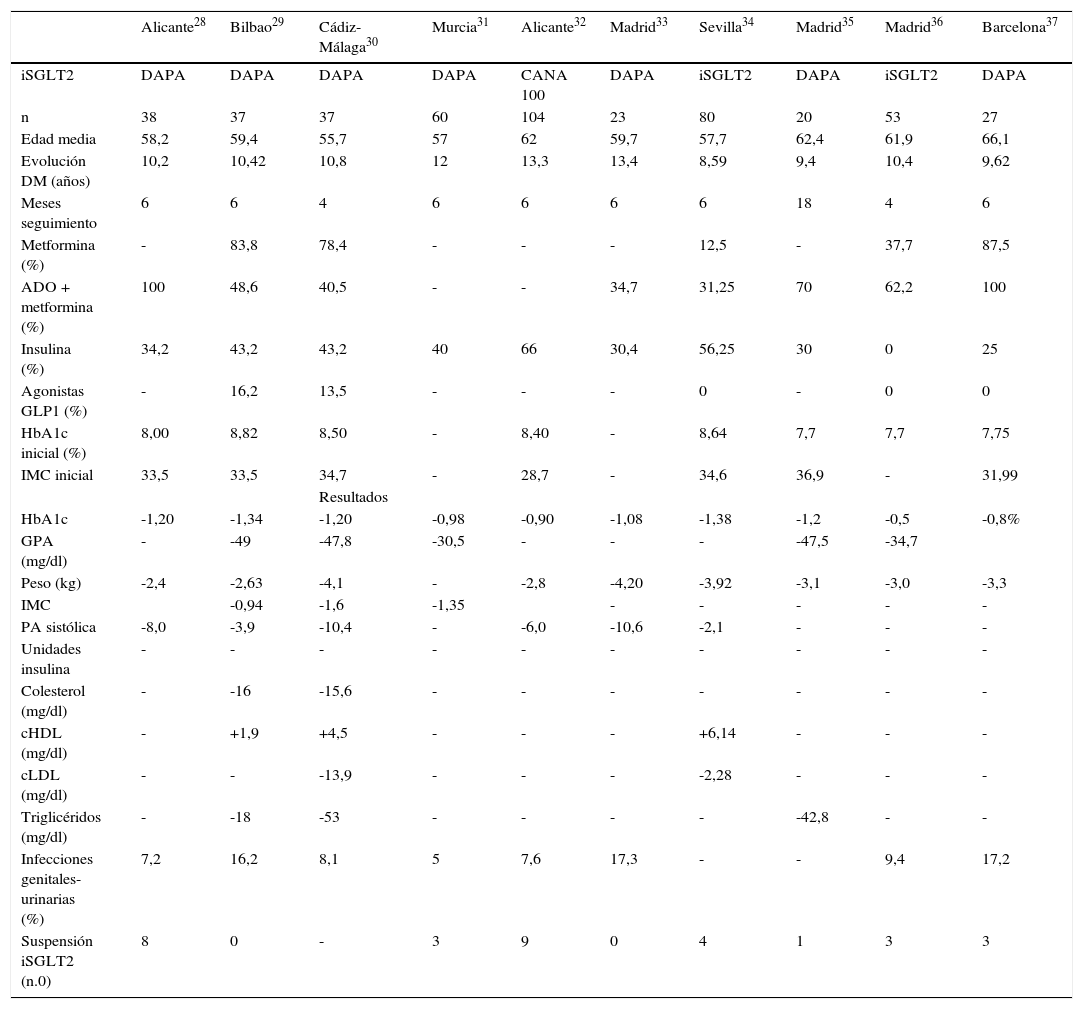El objetivo fundamental del tratamiento en la diabetes tipo 2 es el control global de los factores de riesgo cardiovascular. En casi la mitad de los diabéticos tipo 2 no se logra alcanzar el objetivo de control glucémico y en muchos menos el control del peso y la presión arterial, a pesar de todo el arsenal terapéutico que en la última década ha ido apareciendo para el tratamiento de esta enfermedad. Por otra parte, los antidiabéticos secretagogos y la insulina se asocian a un incremento ponderal y aumentan el riesgo de hipoglucemias. Los inhibidores del cotransportador sodio-glucosa tipo 2 (iSGLT2) se han posicionado en las guías como una alternativa en el mismo escalón terapéutico que el resto de opciones tras el inicio con metformina. En este trabajo se revisa el perfil del paciente más adecuado para ser tratado con iSGLT2 sobre la base de su eficacia y seguridad demostrada en ensayos clínicos controlados. Teniendo en cuenta los posibles efectos secundarios propios del mecanismo de acción de este nuevo grupo terapéutico, se valora en qué pacientes de riesgo deben emplearse con precaución. Estas consideraciones acerca del perfil del paciente susceptible de ser tratado con iSGLT2 se contrastan con los resultados obtenidos en la práctica clínica diaria, tanto en estudios retrospectivos de otros países como en experiencias en práctica clínica real en España. Se presenta una selección de estudios realizados en diferentes centros con un seguimiento mínimo de 6 meses y se comparan con los resultados de los ensayos clínicos. Los iSGLT2 se utilizan en la práctica clínica en cualquier escalón terapéutico y se obtienen resultados de eficacia muy similares a los reportados en ensayos controlados, con una proporción algo más elevada de infecciones genitourinarias y una escasa tasa de abandonos. La mitad de los pacientes reportados son diabéticos insulinizados, a los que se añade una gliflozina, lo que demuestra la gran aceptación por parte de los clínicos de esta estrategia terapéutica. Los iSGLT2 resultan especialmente atractivos por su eficacia añadida en control del peso y presión arterial y la posibilidad de utilizarlos en asociación a otros antidiabéticos o en monoterapia en cualquier estadio evolutivo de la diabetes tipo 2.
The main aim of the treatment of type 2 diabetes is overall control of cardiovascular risk factors. Almost 50% of patients with type 2 diabetes do not achieve glycaemic targets, and a much higher percentage do not achieve weight and blood pressure targets, despite the therapeutic arsenal that has appeared in the last decade for the treatment of this disease. In addition, antidiabetic secretatogues and insulin are associated with weight gain and an increased risk of hyperglycaemic episodes. Clinical practice guidelines recommend sodium-glucose cotransporter-2 inhibitors (SGLT2i) as an alternative in the same therapeutic step as the other options after initiation of metformin therapy. The present study reviews the most appropriate patient profile for SGLT2i therapy, based on their safety and efficacy demonstrated in controlled clinical trials. The article discusses which patients are at risk of experiencing the possible secondary effects due to the mechanism of action of this new therapeutic class, in whom SGLT2i should be used with caution. These considerations on the profile of patients suitable for SGLT2i therapy are contrasted with the results obtained in daily clinical practice, both in retrospective studies from other countries and from real-world experiences in Spain. This article presents a selection of studies performed in distinct centres with a minimum follow-up of 6 months and compares their results with those from clinical trials. SGLT2i are used in clinical practice in any therapeutic step and the efficacy results are very similar to those reported by controlled clinical trials, with a slightly higher proportion of genitourinary infections and a low dropout rate. Half the reported patients are diabetics receiving insulin therapy plus a gliflozin, showing the wide uptake of this therapeutic strategy by clinicians. SGLT2i are especially attractive due to their additional effectiveness in weight and blood pressure control and the possibility of using them in association with other antidiabetic agents or in monotherapy in patients at any stage of type 2 diabetes.
Artículo
Comprando el artículo el PDF del mismo podrá ser descargado
Precio 19,34 €
Comprar ahora







